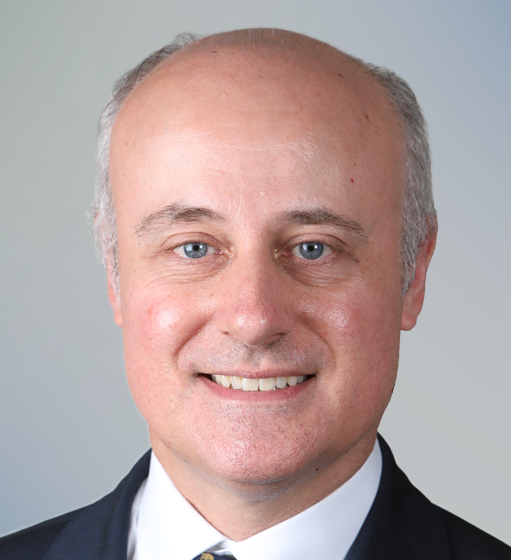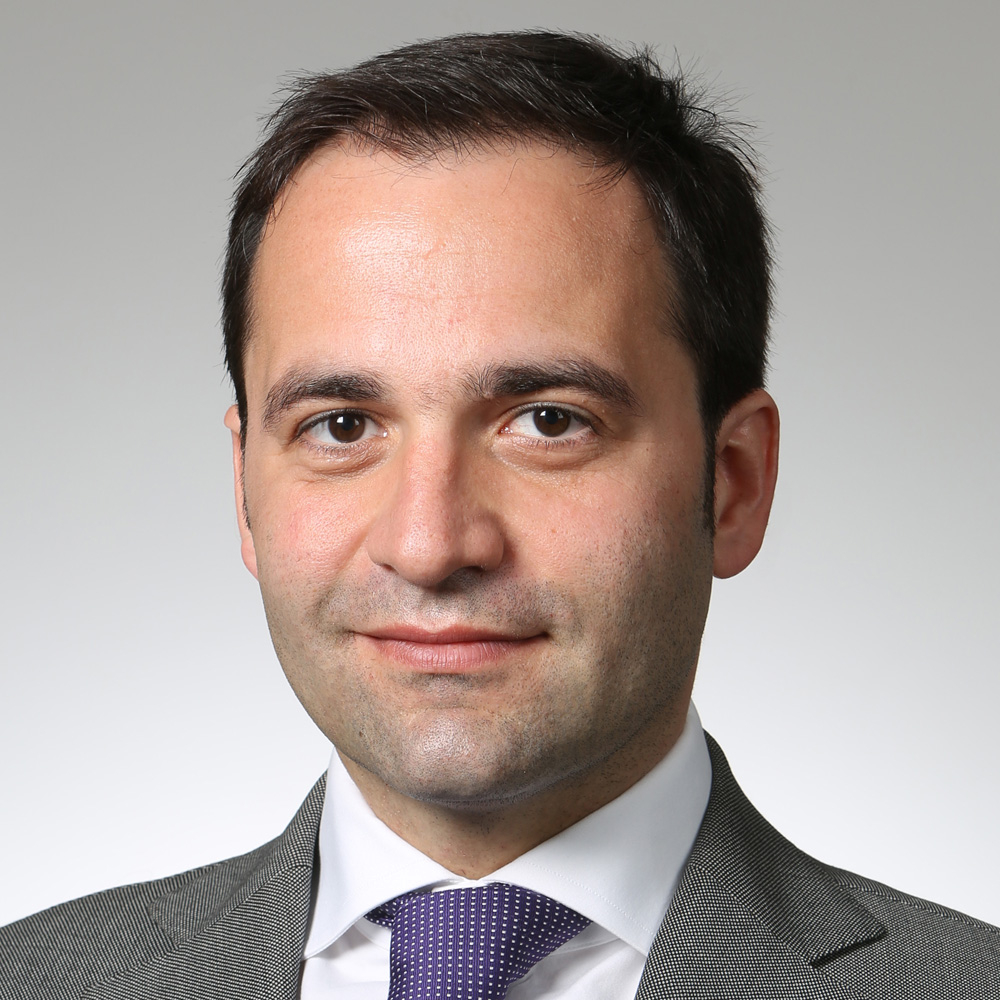Kalin Anev Janse in interview with Börsen-Zeitung (Germany)
Interview with Kalin Anev Janse, ESM Secretary General
Published in Börsen-Zeitung (Germany), 17 November 2018
Interviewer: Kai Johannsen
Original language: English
Börsen-Zeitung: Mr Anev Janse, Greece has left its last rescue programme this summer. What conclusions do you draw after your rescue operations?
Kalin Anev Janse: In the first place, it was a great success for us that Greece could leave the rescue programmes after eight years. This also underlines the resilience of the Greek people. This is often forgotten abroad. And of course it is also a success for the euro area that we have now overcome this crisis. Prior to this crisis, there was no mechanism to help states that lost market access or risked losing it. The ESM and EFSF have helped five countries that all stand on their own feet again today. Four countries are clear economic success stories, and Greece could join this club as long as it continues to reform. This shows that the ESM has helped to keep the euro area together. The euro area is showing a healthy economic performance by now. That is understandable, because the euro, as a common currency, offers many advantages.
The role of the ESM/EFSF is to rescue euro area countries in trouble. Currently there are no candidates that need rescuing. To what purpose will you use the proceeds from future bond issuance? Which tasks will you deploy your funding for?
The ESM/EFSF currently have around €300 billion in bonds and bills outstanding. We have to refinance these debts upon maturity. This is because our loans to countries sometimes have very long maturities terms, 32.5 years in the case of Greece on average. By contrast, the average duration of our bonds is seven years. In other words, we will have to carry out quite substantial refinancing of expiring bonds that were issued to fund the loans to former euro area crisis countries in the coming years. And that means we will continue to be a very prominent player in the supranationals, sub-sovereigns and agencies segment of the fixed income market.
What does that mean in concrete terms? What will the funding volumes for ESM and EFSF be next year, together, and separate for each institution?
Overall, in 2019 we will raise €32.5 billion through the markets. The ESM accounts for €10 billion, €22.5 billion is for the EFSF.
What are the funding volumes for ESM and EFSF this year, and how much have you raised already?
We have now raised €18 billion euros with the ESM. The most recent transactions were the dollar deal and then another euro bond, which completed our funding this year. The EFSF has issued €28 billion this year, so we’re done there as well.
Which transactions stood out?
There were some real highlights in our issuance this year. We had a strong start to the year with a €6 billion seven-year bond, which generated an order book of more than €13 billion. We also launched our second dollar deal. It had a very good order book, we gained some new investor names, including some central banks. The ESM did a dual-tranche in August. We topped up our 40-year ultra-long bond, and issued a new 35-year bond in July on top of that. This €2 billion bond received an order book of €3.4 billion. And we were also very active at the short end. We issued a new three-year bond. Orders were €5.8 billion for a volume of €3 billion. So we were very active along the entire term curve, and clearly there were many successes.
Last year, the ESM made its debut in the dollar market, which was very successful. You have announced that you will come up with one or two benchmark deals each year. The second dollar deal was in October. Why did you wait so long?
We always try to find the best market opportunity, and we explore maturity, pricing and timing. At the beginning of the year, we also spent a lot of time marketing our dollar deal. We did roadshows in Asia, Latin America and Africa to show investors the benefits of a dollar bond from the ESM. From the investor feedback we knew that the short end of the market is very attractive. This enabled us to issue a two-year bond in October of this year, achieving very good investor diversification. Strategically, that was valuable, because we want to build a curve in the range of two to five years. As you know, last year we issued a five-year dollar bond.
You’ve communicated the build-up of a dollar curve and this has now been executed. Will there be a second dollar deal this year, and could you imagine extending the maturity spectrum to seven years?
Yes, we wanted to build a curve, and the two-year paper was a good addition to the five-year bond. Also, we were able to smooth out our repayment profile in 2020. Before the dollar deal, we had repayments of just €5 billion in 2020, which has now gone up. This helps us to achieve a stronger market presence in 2020. But for this year, we’re not planning a further dollar deal. There will be at least one dollar bond next year, which is something we’ve committed to. I can’t rule out a seven-year bond. In principle that maturity is possible, of course. But the longer end in the dollar market is usually less attractive. And it is well known that we want to establish the short end of the curve first.
Should investors prepare themselves for two dollar bonds in 2019?
The total funding volume of the ESM in 2019 is €10 billion. From a purely strategic point of view, we will maintain our presence in the dollar market, and at least issue one dollar bond. I can’t promise more now. But of course we also have our investor base in the core market, which we will serve, and that is the euro bond market.
What was the investor response to the second dollar deal, and what do the investors say: do they want a greater ESM presence in the dollar market?
It was a great success. We are very grateful for the investor confidence in our dollar deals. We saw very strong participation in the deal from Asian investors. Last year we had 11% of Asian investors, now it was 26%. Particularly noteworthy is the high proportion of central banks, sovereign wealth funds and governments of 73% this year. Last year it was just 24%. So the dollar deal was very popular among public sector investors. It shows how strong and impressive the order book was. Many investors have told us it is good to have another strong player in the dollar market, especially one with a strong rating. They used it to fill existing unused credit lines. The bond also performed well in the secondary market. The spread narrowed from 0 basis points on the issue to minus 2 basis points one month later. So we are happy with the deal.
Do you have plans for bond issues in other currencies?
According to the statute of the ESM, we can issue in all currencies. With €300 billion in outstanding bonds, we want to be an important player in all the markets in which we are represented. We are the world's largest issuer of euro-denominated debt outside of the public issuers, both this year and the last. If you include sovereigns, we are the fifth-largest issuer of euro-denominated bonds worldwide. We will continue to be present in the dollar. We also want to stay in these two currencies for the time being; these are the two most important issuance currencies worldwide. We will strengthen our presence in both currencies. In the short term, I don’t expect that we will issue in a third or even fourth currency. Of course, that can change in the long run. We will then communicate this to the markets at an early stage.
How has the liquidity of ESM/EFSF bonds developed this year?
We’ve seen a significant improvement in liquidity this year. Turnover of our bonds increased from around €30 billion per quarter in previous years to around €50 billion per quarter in 2017 and 2018. We have excellent tools to measure that. These are Fintech solutions we developed ourselves. To do so, we take a close look at data from our market group, our syndicate banks. It enables us to see exactly how our bonds are traded. 120,000 data points are evaluated to measure the turnover rate and thus liquidity. We are also active in the primary markets to improve the liquidity of our bonds, for example by increasing the volume of outstanding loans when we see a bond dry out. Of course, what helps liquidity is that we have become a trusted name. Many investors want to hold our bonds.
What else can you tell me about that?
We also see that investors and traders are interested in trading our bonds. Furthermore, we are very transparent, because transparency helps liquidity. We announce issuance plans. Our newsletter is very well received. We regularly provide updates on the developments of our institution. All this together is very well received in the market.
And what do you expect for liquidity conditions next year, when the ECB bond purchases expire?
The ECB currently holds around 45% of our bonds. That's our estimate. The ECB can go up to 50% of our outstanding volume. So they are close to their upper limit. In previous years, the ECB's involvement was stronger, and their activity in our bonds has slowed somewhat this year as they are now close to their maximum. The ECB has announced it will no longer extend its balance sheet from the end of 2018. But of course, it still has to make significant reinvestments, which will affect the market. The ECB will continue to hold high bond levels in the foreseeable future. All in all, it is fair to say that the liquidity situation has improved, despite the ECB still being active in the market.
What about the other part of the ESM/EFSF bonds?
The remaining part of our bond that is still in the market - currently 55% of the issued volume - is very liquid. If investors want to hold our bonds, they can do so. If they want to sell, that's just as feasible. Everything works very well. With our new Fintech technology, we are in a position to see if a bond threatens to dry out when it is being bought by the ECB. We also monitor the reverse auctions by the Banque de France. We can then inject liquidity to top up such bonds.
What is the current status of the N-bond programme, and what are your plans for 2019?
This year, we issued more than €175 million in N-bonds, or Namensschuldverschreibungen. But we only do these deals on demand. For us, this is a supplementary refinancing instrument, in addition to bonds and money market instruments. Especially among investors in Germany, the product is popular. We have very loyal investors coming to us if they want specific maturities. This is good for us as an issuer but also for investors - a classic win-win situation. We can tailor the product. It will remain an important funding tool for us in the future.
Green & Sustainable Finance is a key topic in bond markets for a variety of reasons. Are you looking at that, and are you interested in issuing such bonds? Could the financing of climate projects in euro-zone countries be a future activity area for the ESM?
That's an important topic. But we cannot issue green or sustainable bonds because we do not finance such projects. That won’t change. What we do see is a strong movement among the multilateral development banks towards Green & Sustainable Finance. It is not just about green and sustainable bonds, the institutions themselves also want to be sustainable. Investors and rating agencies now scrutinize these institutions to see how sustainable they are, on top of rating the valuation of a single sustainable bond. And looking at it this way, we are such a sustainable institution, because we have strengthened Europe by helping countries to emerge from the crisis. And investors increasingly see us as a sustainable institution for these reasons. When it comes to financing climate projects in Europe, however, this is a task that is being carried out by our neighbour here in Luxembourg, the European Investment Bank. But if an investor wants to buy bonds that strengthen Europe or the Eurozone, then you should buy our bonds.
What does your institution do itself in the area of ESG?
We are active in this area. There is also a section that deals with this in our annual report. In summer we launched our ESG website. We have also worked with relevant organisations, such as Transparency International. We are active in the climate efficiency of our building and we already received certain labels Green & Recycling labels here in Luxembourg. We’ve installed charging stations for e-cars. We do a great deal to be green and sustainable as an institution. And we are very active as an investor in green bonds. In 2017, we bought green and sustainable bonds worth €350 million. These are only bonds that have been directly rated green or sustainable. If you refer to sustainable institutions, the volume purchased is much larger. These purchases were made as part of the paid-in capital of €80 billion.
Are there any plans for new fixed-income instruments?
We are well established with our euro and dollar bonds, as well as N-bonds and a significant derivatives book. We currently have no plans for new instruments. We do a lot on the technological side. There’s a group in the organisation called ESM 4.0. They deal with about technological progress in the bond markets. We want to create a platform for public issuers in Europe, which should ensure a more efficient distribution of debt securities in Europe. This will be a modern Fintech solution, driven by the public sector in Europe. The system will reduce costs and provide a better match between supply and demand. This ultimately leads to a strengthening of the markets. As a major player in the SSA area, we want to serve exactly this market segment with innovations and thus modernize the entire system.
What economic perspectives do you see for the Eurozone in 2019?
The EU Commission forecasts growth of 2.1% for the euro area this year and 1.9% for the next. The euro area will thus continue to grow above potential. 50% of Europe's population expects the economy to be in good shape by 2019, with 30% expecting the situation to worsen. This is a good situation we are in, and we can justifiably be proud of having mastered the crisis that way.
What risks do you see?
There are a few risk factors. These include a cyclical downturn, given we are late in the cycle. But we also have new emerging risks such as trade wars, the situation in Italy and a difficult situation in individual emerging markets. Digitization is another issue to look at, because it increases cyber risks. But overall, Europe has shown that it can handle big problems quite well. Over the past 60 years, states such as Germany, the Netherlands and France have outperformed the US and the UK in terms of per capita growth. That’s nothing to be ashamed of! We combine two things: a highly competitive economy with a strong social safety net. This is a unique combination. It can be found in Europe, but it does not exist in the US. I believe we will master the risks I mentioned, because Europe is a place that believes in multilateralism and strong cooperation with its neighbours.
Contacts




